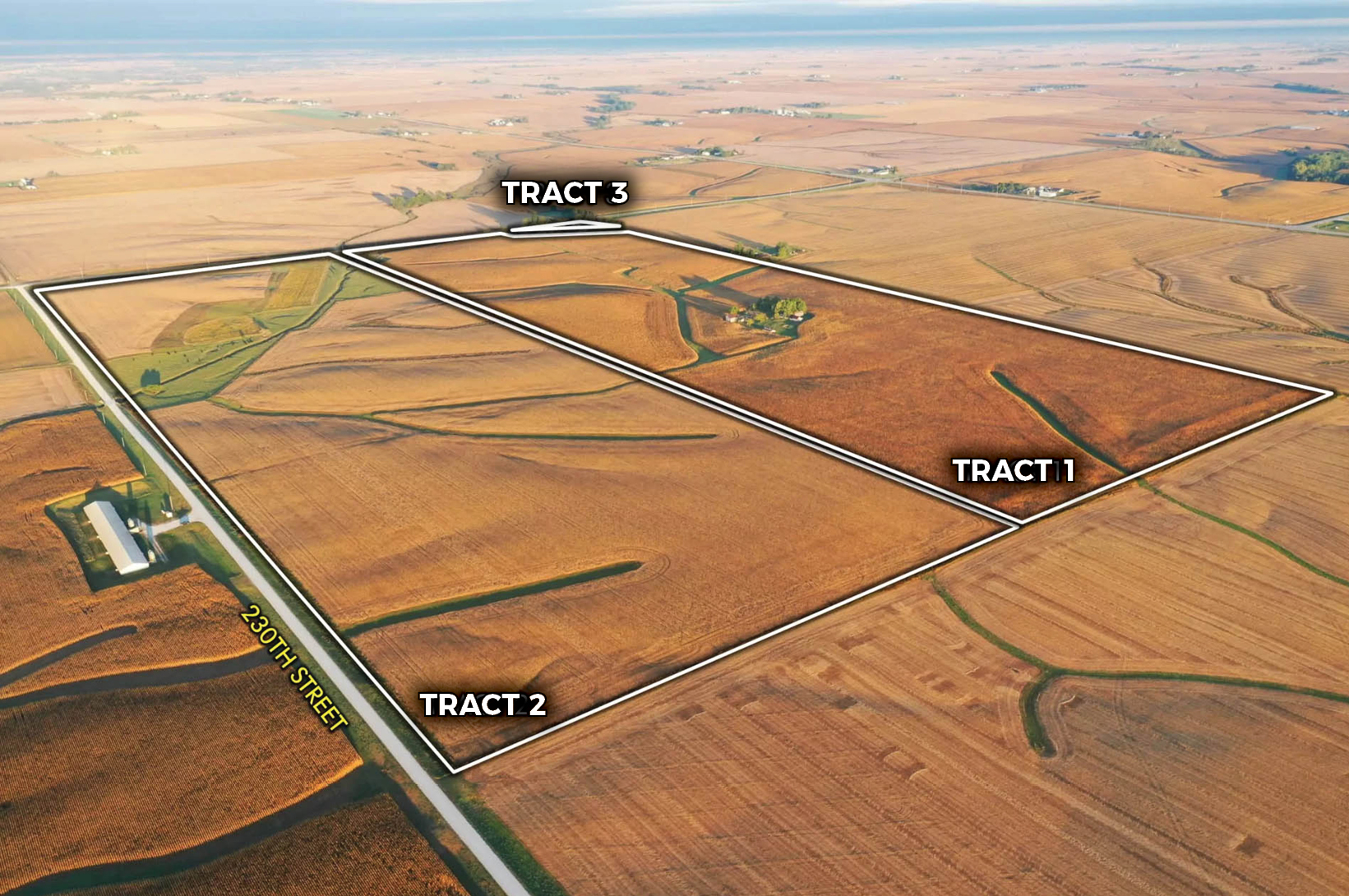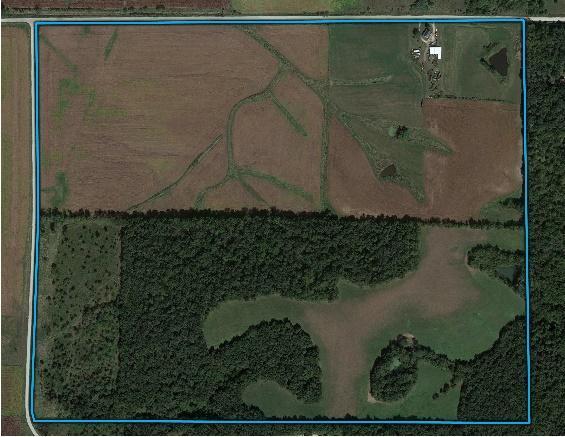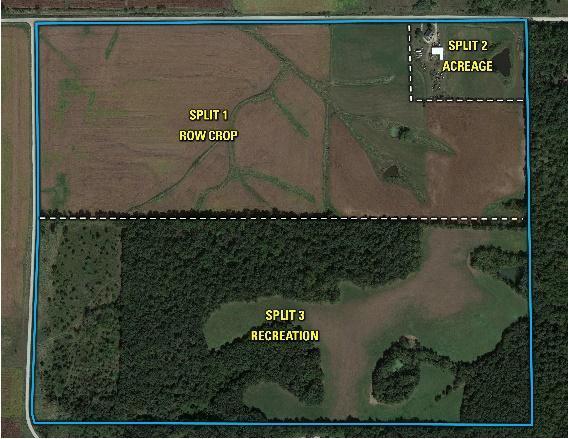
** This property is not for sale and is only used as an example
Have you ever wondered why real estate professionals split whole properties into multiple tracts? We believe at the simplest level, it is all about maximizing the value of the farm by increasing the size of the buyer pool. To do this, we look at the different dynamics of your property and tailor splits that maximize the value to each member of the buyer pool. There are two main reasons for splitting a property.
The first reason for splitting a farm is that the tract you are selling is larger than most of your buyers can afford. An example would be a 240-acre tillable tract. Many buyers would not feel comfortable buying all 240 acres with today's land prices. In this case, we would likely split the tract into three 80-acre parcels so that more farmers/investors could afford to participate in the sale. In this instance, we use the “buyer’s choice” method via an auction. The winning bidder then has the chance to buy one tract or all three tracts with a successful bid. Resulting in the whole farm bringing a premium the day of the sale.


** This property is not for sale and is only used as an example
The second reason for splitting a property is because the farm has multiple land types. To illustrate this, let’s use the property above as an example. This farm consists of 200 acres m/l with some above-average row crop acres, a desirable homestead acreage and a mix-use parcel consisting of timber/recreation. If we sold the farm as one parcel, the farmer/investor buyer would discount the non-crop acres. The recreational buyer will discount the crop acres because he/she is often not looking for a 30-year investment in tillable farmland. The acreage buyer can’t afford the whole property, so he/she cannot participate. By selling the whole farm together, neither of the different buyer pools will pay a premium for the property.

** This property is not for sale and is only used as an example
Now, look at the same farm above split into three different parcels. By creating the split this way, the real estate professional has divided the farm so each of the different types of buyers will pay a premium for the parcel they desire.
In both examples, creating a larger group of potential buyers, coupled with the auction's sales strategy, can create a competitive, exciting, high-stakes environment from which the seller can benefit.
Finally, there are a few things to think about when splitting a large property. Ensure each parcel has adequate access; poor access will hurt the value. When we consider the ease of farming, terraces and draws can make farming the property challenging and could diminish the value. The last thing to consider is trying to avoid unnecessary easements. This is because easements create uncertainty and buyers will pay more for owned access.
Cost is also a consideration. A typical survey ranges from $1,500 to $3,500, and abstracting may add another $1,000 per tract. However, if done correctly, the cost of a survey and abstracting will be easily outweighed by the increased value created by the split.
Each property is unique, and there can be several ways to split a parcel to increase value depending on current market conditions. If you are interested in the best way to maximize the value of your property in a sale, please feel free to reach out to one of Peoples Company’s dedicated real estate professionals today at www.peoplescompany.com











